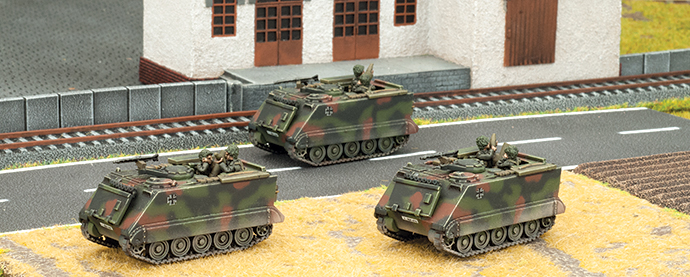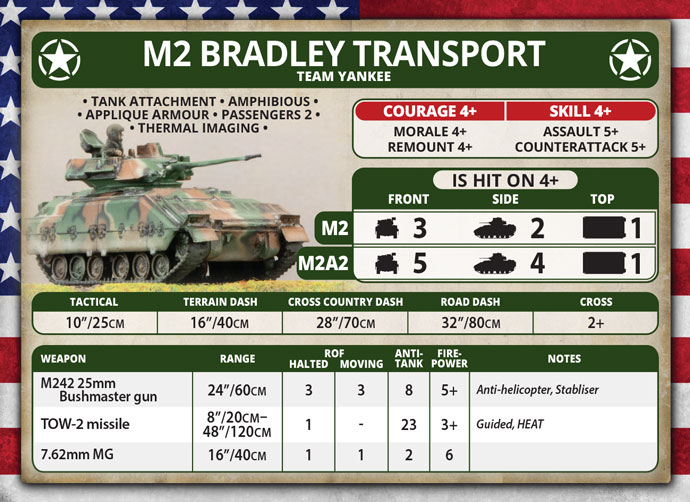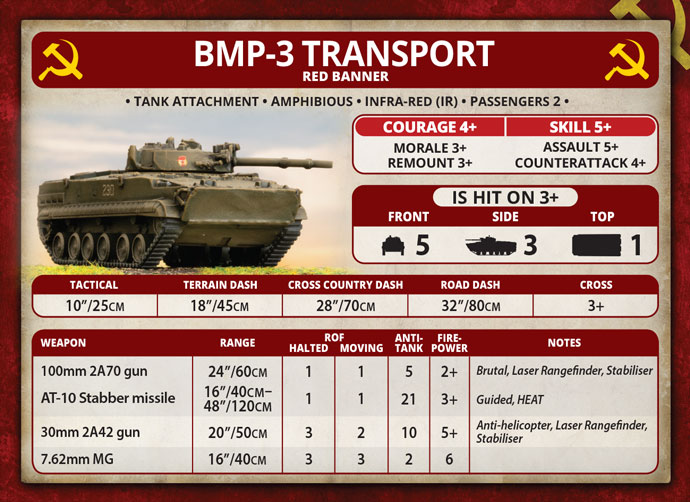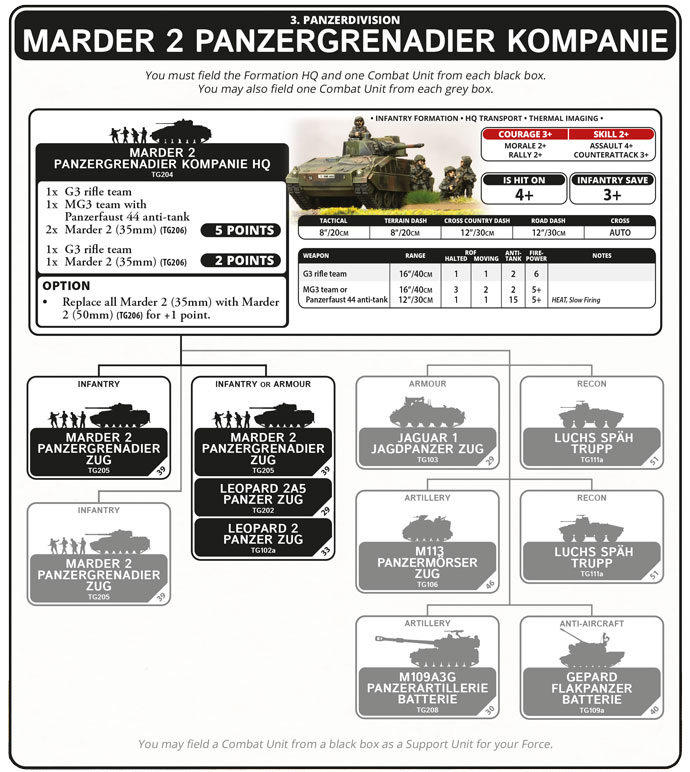Modern Fallschirmjager jumping from a CH-160 Transall
Apart from the Gebirgsjäger Kompanie, one of the other formations I was really looking forward to seeing in the new West German book was the Fallschirmjäger Kompanie. These iconic warriors had a huge influence in WWII and in the development of new tactics and methods of warfare, which has carried on into the more modern battlefield of the 20th Century and beyond. Although you may not see a mass unit jump again, like the Fallschirmjäger did when they bravely jumped into Eban Emael in Belgium and in the Invasion of Crete during WWII, in what was some of the first successful uses of paratroopers, it did make other nations take notice and implement their own paratrooper programs.
The hard lessons learned in airborne drops like Crete and Operation Market Garden were that you needed to be confident of quick support to the often lightly armed and isolated paratroopers and that they needed to drop with adequate equipment to be able to handle both infantry and armour. Developments of weapons like the Panzerfaust and the FG-42 Paratrooper rifles are examples of what the Germans came up with within WWII to assist the paratroopers with these problems.
The Germans actually developed several early helicopter designs in WWII and some were used in limited roles such as observation vehicles, medical evacuations, and light transport examples such as the Flettner FI 282 Kolibri, and Focke Achgelis Fa 223 Drache are noted, but extensive allied bombing prevented any widespread use of the helicopter by the Germans in WWII. The Allies were also developing their own helicopter designs during the war, like the Bell 30, and Bell 47 (which entered civilian service in 1946), and the Sikorsky R-4. Interestingly the Sikorsky R-4 was the only Allied-designed helicopter to serve in WWII, it was used primarily as a search and rescue vehicle by the USAAF 1st Air Commando Group in the remote Burmese Campaigns against the Japanese.
The introduction of the helicopter in the 50s and 60s was mostly used as either an observation vehicle or for quick medical evacuations as was seen in Korea, with the helicopters at the time being too small to carry many passengers or large weapon loads that would make them effective gunships or mass transports. It was not until the Vietnam War and the introduction of large turbine engine helicopters like the UH-1 Huey and CH-47 Chinook that you saw mass troop transport via helicopter.
German WW2 Helicopter – Focke Achgelis Fa 223 Drache
The Vietnam conflict saw whole companies carried by helicopters into battle, one of the first was the Battle of IaDrang, where the 1st Battalion, 7th Cavalry Regiment of the US Air Mobile Division was dropped in, one company at a time, with 16 Hueys needed to drop each Company. Airborne assault units like the 82nd Airborne and 101st Airborne are now more often being delivered into combat via helicopter instead of massed paratrooper drops like in WWII.
There are a few reasons for this. Firstly, the slow-moving transports needed to mass drop paratroopers at low levels as they did during WWII would now be sitting ducks for enemy anti-air weapons, so any drops close to enemy lines would be very risky. Also inserting troops via helicopter is very precise, you know exactly where you are inserting them, unlike the mass of troops being scattered across kilometres, which was what happened in WWII. Helicopter insertion can also often be done into “Hot” drop-zones with the advent of helicopter gunships. These gunships can provide massive amounts of suppressing and supporting gunfire to inserted troops.
In the Vietnam War special operations, teams like MACV-SOG, Navy SEALs, and Green Berets were often inserted via helicopter, with support from gunships. They were also often extracted under heavy fire while covered by units such as the HA(L)-3 Seawolves, and the US Army Combat Aviation regiments with heavily armed UH-1B Hogs or similar variants, or Cobra Gunships. If you want to read some stories of heroism, I strongly suggest you look up stories about MACV-SOG and the Seawolves, some of the missions they survived beg belief.
In modern conflicts, it is more common for these airborne troops to be inserted via helicopter now instead of jumping from a plane, as you saw in the Invasion of Iraq in Operation Desert Storm, with 2,000 Paratroopers of the 101st Airborne Division being transported by around 400 helicopters, 155 miles behind enemy lines, in what was at the time the “deepest air assault operation in history”. So this is why in the Team Yankee period we are seeing airborne troops being transported via helicopter instead of parachuting into the action.
In the Team Yankee time period, the Fallschirmjager are part of the 1. Luftlandedivision (1st Airborne Division), which was made up of three brigades, Luftlandebrigade 25, 26, and 27. One Luftlandebrigade was assigned to each Korps and was usually stationed at the rear of each assigned area, they usually split Luftlandedivision helicopter assets between each brigade and had no specific helicopter transport units assigned to each brigade. The Luftlandedivision also had a small airlift field artillery battery attached to it, of what appears to be 6 OTO Melara M56 105mm artillery, originally designed for the Italian Army’s Aplini Brigades.
Each Luftlandebrigade was made up of three Battalions, and also had its own LuftlandepionierKompanie, and LuftlanemörserKompanie with 120mm mortars to provide direct fire support. Each Battalion was made up of two paratrooper companies, and two anti-tank companies, with each anti-tank company having a mix of TOW anti-tank missiles and 20mm rapid-firing dual purpose cannons that could be used in both anti-air and ground fire modes.
As far as transport helicopters, the Bundeswehr had either the UH-1D Huey or the larger CH-53G Sea Stallion available to ferry its Fallschirmjager into battle. Both are Vietnam-era warhorses, but still operate around the world today, with the UH-1D being able to ferry in 10 passengers, and the CH-53G has the capacity for 24 soldiers in 1985, but received upgrades in the 1990s to take 36 armed passengers. The UH-1D was used by the Bundeswehr up until 2021, and the CH-53G is still in service, but it is either in need of an upgrade or replacement to continue serving much longer.
Bundeswehr Fallschirmjäger about to board a CH-53G
A German Bundeswehr Fallschirmjager tells a tale “of sitting in the UH-1D, only a few meters above the treetops, in their “battlefield taxis”, enjoying every moment, but also thinking they will crash at any time, with the Huey pilots laughing at them…”, they also trained to jump with parachutes from the Huey, for rapid insertion where it was either too dangerous for the helicopter to land or for covert insertion. They practised both low-level and high-level insertions, as well as disaster crisis missions, armed repatriation, and evacuation of German civilians in other countries.
As far as the battlefield in WWIII, their mission, in general, would be to act as a quick reaction force, to protect against enemy breakthroughs, engage the enemy on the flanks, or quickly redeploy in areas to bolster the defence. They would also be expected to act offensively, either as an air-assault unit, disrupting enemy communications and supply lines, or harassing enemy reinforcements.
They were considered light infantry and were armed with the typical weapons for the period, so H&K G3 Rifles, MG 3 machine gun (which is basically an improved WWII MG42), and a Panzerfaust 44 anti-tank rocket launcher for use against armour within 300 meters or less. They were also armed with Milan anti-tank missiles, American TOW wire-guided anti-tank missiles, and for light armour and helicopters a Rheinmetall Mk 20 Rh-202 20mm autocannon, which is the same autocannon mounted on the Marder 1 and Luchs.
The TOW anti-tank missiles and 20mm Autocannons were originally mounted on a small military quad vehicle called a Kraka. It could either mount one TOW missile system or a single 20mm cannon with ammunition and was lightweight and small and foldable, with a top speed of 55 km/h. It could also be used as a battlefield ambulance, munitions carrier, and scout vehicle, and was very easily transported via helicopter. It was in use with the Luftlandedivisionfor for 20 years, from the early 70s to 1990, and was replaced by the Wiesel armoured weapons carrier.
The Wiesel is unique on the modern battlefield, in that it is the only true modern tankette used in Western Europe. It is a light air-transportable weapons carrier made specifically for the Bundeswehr. They saw the need for an air-transportable weapons system to effectively enable their light infantry Fallschirmjäger to successfully engage and destroy modern heavy armour like the T-72. The Kraka quad was their first attempt at this solution, the Wiesel is an evolution of this. It was developed by Porsche who made some prototypes in 1978 but was stopped due to lack of funds. Porsche continued the development due to interest from other countries, the Bundeswehr eventually ordered 343 vehicles in 1985.
A Wiesel exiting a CH-53G Sea Stallion
It can perform multiple roles, from surveillance, anti-infantry, anti-armour, with the Wiesel 1 (the Team Yankee Version) being armed with either a TOW anti-tank missile system or a dual feed Rheinmetall Mk 20 Rh-202 20mm autocannon for anti-infantry or helicopters. A later variant, the Wiesel 2 Ocelot, can mount 4 Stinger anti-air missiles, as well as a 120mm Mortar variant, Engineering Scout variant, and Command variant.
It is an excellent reconnaissance and ambush vehicle, with a very low silhouette, a height of 2 meters, can travel at speeds of up to 75 km/h, and the chassis can protect from weapons fire up to 7.62 mm rounds. It also weighs less than a US Humvee at just less than 3 tonnes and can ford water depths of up to half a meter. But most importantly it is easily air-transportable, with the CH-53G Sea Stallion being able to carry 2 Wiesel’s, and larger transports like the CH-160 Transall being able to carry 4 or more. Incidentally, the CH-160 can also drop up to 88 paratroopers if they were going to drop into combat in the more traditional role.
Personally, I think this vehicle may take over from the WWII Panzer 2 Luchs, as my favourite tiny tank… as it now comes with missiles!
So having made up a list using the new Fallschirmjager Formation, the first thing I saw was that I needed more Wiesel’s…. not just because they look awesome, but because they were a cheap way to get very mobile TOW anti-tank missiles. So with one full Fallschirmjager formation only costing 25 points without helicopter transports, I got another one with an additional Zug with the helicopter transport upgrade. This gave me 8 TOW Wiesel’s and 12 20mm Autocannon Wiesel’s in total, with the TOW Wiesel’s being able to take care of most tanks, and the 12 Autocannon Wiesel’s being able to harass enemy AA and artillery as well as enemy infantry. They also flesh out your formations to make them harder to break.
As far as your infantry goes the Fallschirmjager Zug has 5 stands plus a Milan launcher, and you only get three Fallschirmjager Zugs per formation, so two formations give you six Fallschirmjager Zugs, with six Milan launchers. Although not as good as the larger Gebirgsjager Zugs, they still have six stands in total so better than the smaller Panzergrenadier Zugs from the Leopard book. They also still have the panzerfaust 44, which does good work if you are assaulted by armour. This will give you plenty of infantry teams to either defend or push an objective, so although this is probably more of a defensive ambush list, the fact that the Wiesel’s have no armour means they do not count for deep reserves, still allowing you to play an aggressive list if you choose. Also, the Fallschirmjager Zug with the helicopter transport can be used if you want to try to grab an objective later in the game, ideally if you have taken out any nearby AA or units who will fire on it as they attempt to disembark.
In keeping with the Helicopter theme of the Fallschirmjager, I have taken two flights of 2 PAH, for their anti-tank firepower, as they are the only thing that the Fallschirmjager can take with HOT missiles for more heavily armoured tanks. Having four of them in two units should make it harder for the enemy to counter them and the Autocannon Wiesel’s should be able to support them in either taking out enemy AA or enemy helicopters.
Another great new unit which I spied in the new book is the Marder 2 Späh Trupp from the Leopard 2 Pazneraufklarungs Kompanie. I can’t believe I didn’t notice this little gem earlier. For three points you get a small 2 vehicle Marder 2 Zug, with scout and spearhead, FA 6, Side 4, and top of 1. It also has Thermal Imaging, Chobham Armour, as well as a Laser Rangefinder and Advanced Stabilizers, so much advanced tech for such a small vehicle. It comes standard with a 35mm autocannon, range 28” AT11 and 4+ firepower, which is excellent in itself, but you can upgrade one or both of them for another point, to a 50mm main gun, which has 36” of range, AT 13 and 4+ firepower. I have found my sniper unit against AA and artillery, I wish I could take more, but unless you take the Leopard 2 Pazneraufklarungs Kompanie you can only take one as a black box support option. But these will be in pretty much every list I take from now on, I think these are that good!!! I can also see the Leopard 2 Panzeraufklarungs Kompanie itself as one of the few affordable ways to run the Leopard 2 or Leopard 2A5.
As far as the rest of the units, another Zug of Luchs for extra spearhead and things to annoy enemy artillery and AA, a LARS Zug with minelets for salvos to blanket AA, arty, and infantry, and to block off enemy routes of advance. I also never leave home without the Roland, just to shoot down enemy aircraft at the range, and if my opponent does not have any, they are cheap, so no great loss. You can also put them in reserve if not needed, so win-win. Another unit I never leave home without is the Leopard 1, I still think they are the point for point best tank in the game, people may not agree, but they are usually a smoking crater after I have flanked them…
So my thoughts on the Fallschirmjager Kompanie, is that this will be a bit of a high skill base formation to play, with you really needing to understand and abuse the low West German skill roll of 3+ (or better from HQ units) and to use your movement orders to get the best out of your units. This should not be new to West German veterans, as it is something they should be used to from the previous lists, but will be a steep learning curve for a new player. I do think it will be a very enjoyable formation to play, with lots of opportunities to ambush with the TOW or 20mm Autocannon Wiesel’s or even the Marder 2 Spah Trupp. Or you could have some interesting assaults with the Fallschirmjager both in defence or attack, and once you get the hang of it even try for the Holy Grail, the Helicopter Airborne Assault!
Well I hope you give it a try, I know I will be getting some for myself, especially those Wiesel’s and Marder 2s, I do love me some light armour!
~ Adam


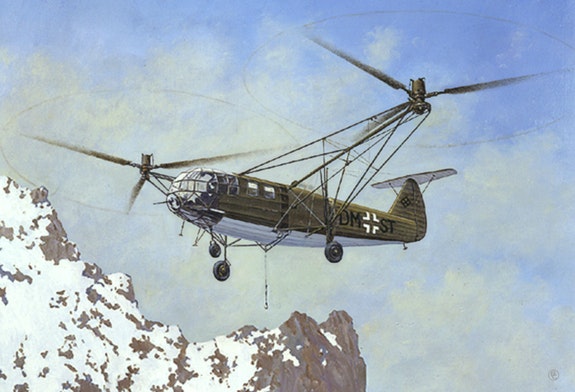
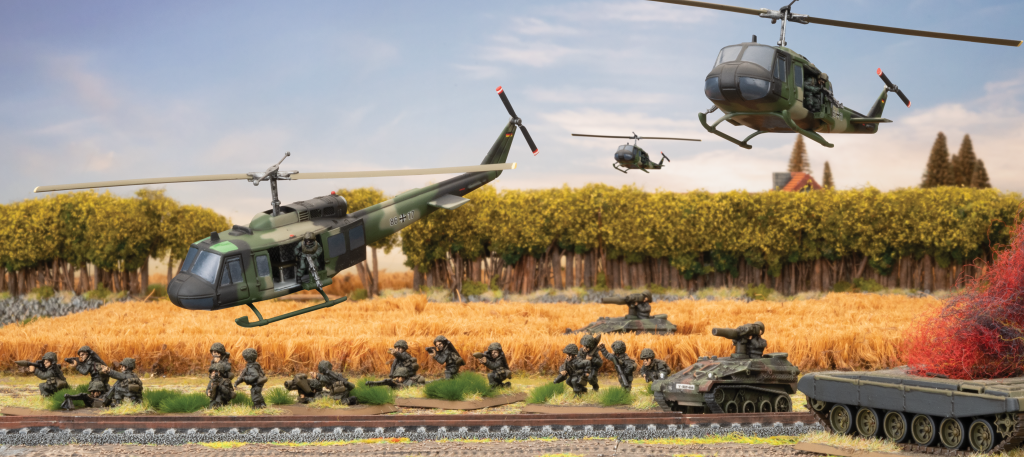
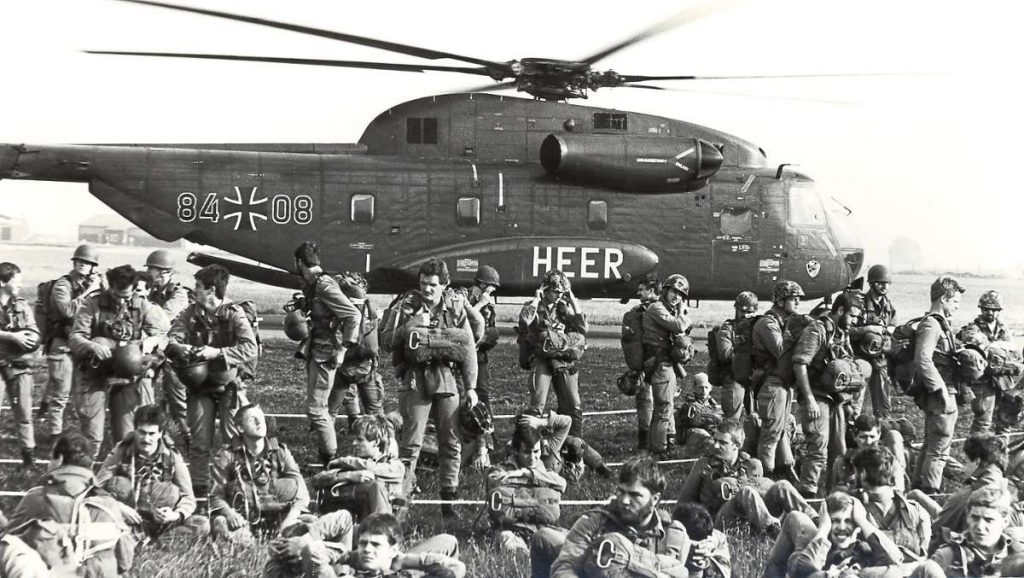

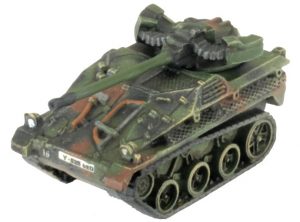
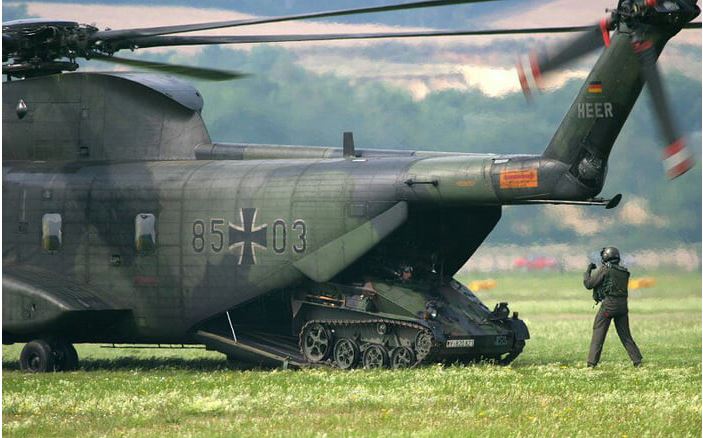
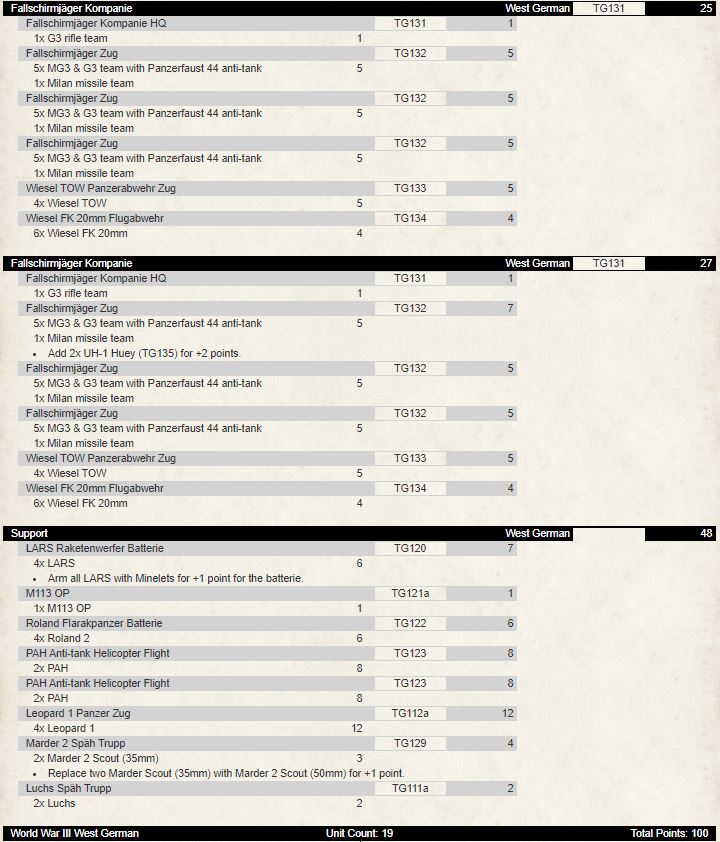
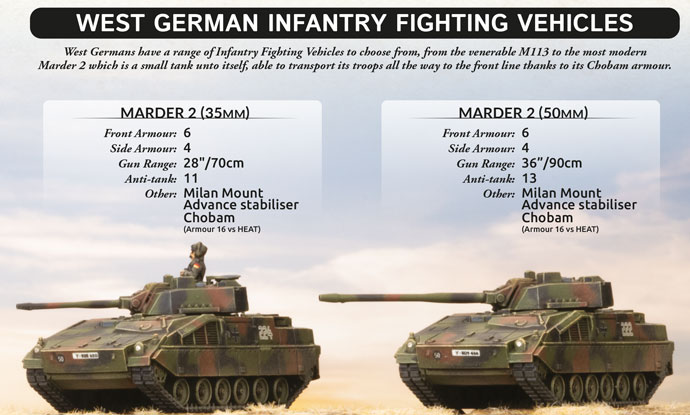

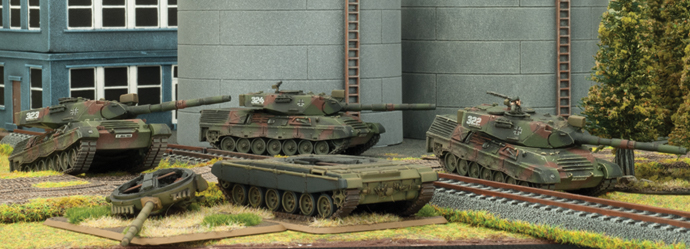

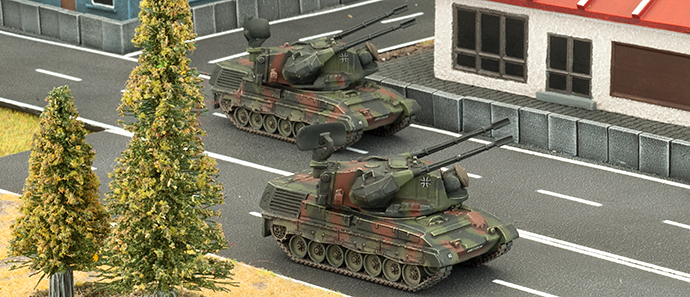
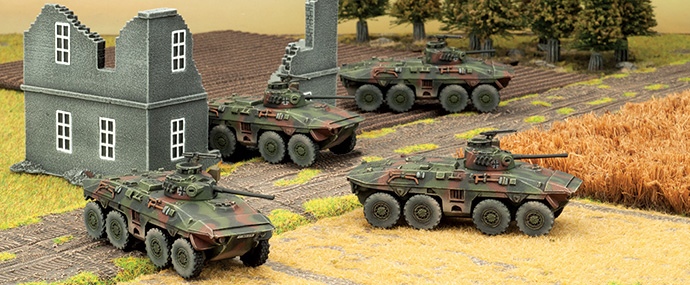
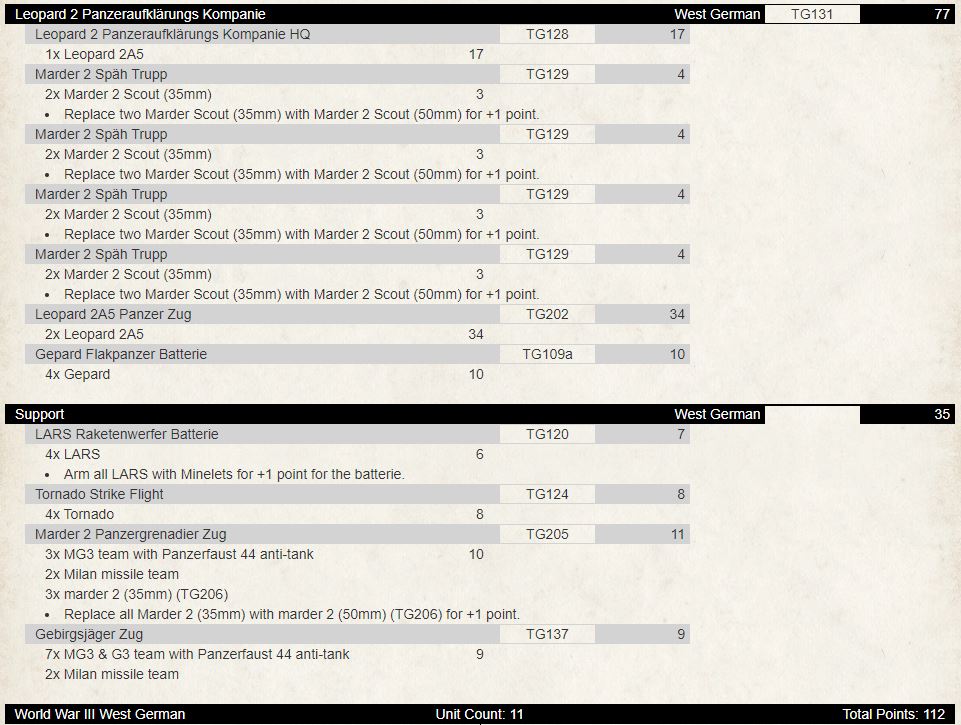
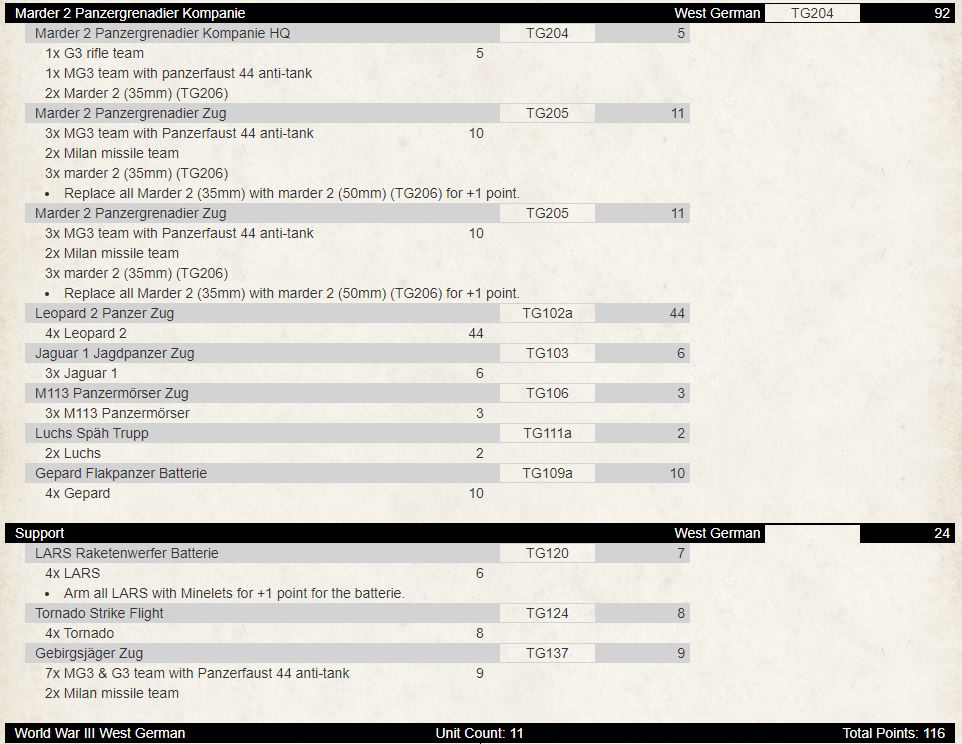
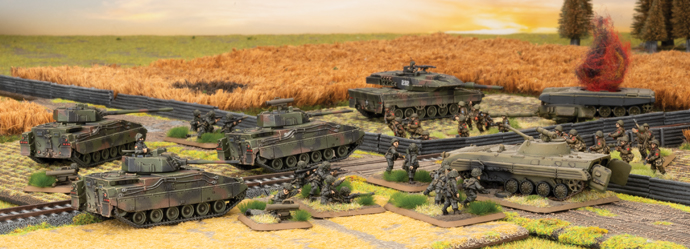
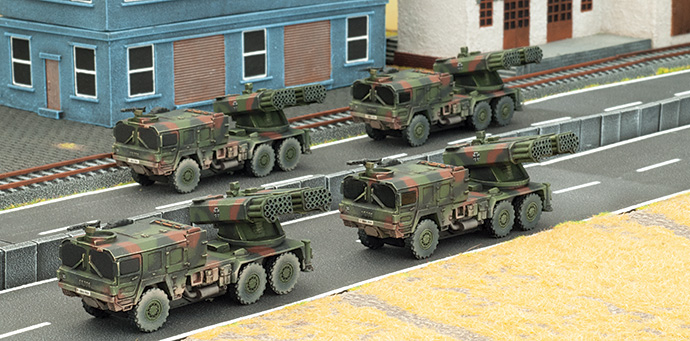
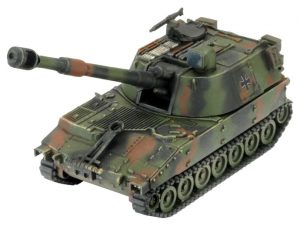 Starting off with the new equipment, let us look at the M109A3G Panzerartillerie Batterie first. This is an upgrade to the existing M109G (with a longer improved barrel) and has partially replaced the M109G in frontline units. The gun can deliver a potentially devastating AT4 artillery template out to 112” – pretty much anywhere – even on the larger tables! Can fire a smoke bombardment and bomblets. Even tanks need to fear this, you can catch everything underneath it with AT4, you can remove vehicles including tanks. FP 2+ means anything that fails its saves is most likely to be destroyed. Direct fire it can reach out 24” with Brutal, AT15 and auto firepower. Nasty against non-Tanks and infantry. They are armoured so have some chance of survivability – especially against counterbattery fire and have a cross check of 3+ which means you can park them in woods to conceal them and not too worried if you must move them. Three for 8pts, four for 11pts, five for 13pts, six for 16pts.
Starting off with the new equipment, let us look at the M109A3G Panzerartillerie Batterie first. This is an upgrade to the existing M109G (with a longer improved barrel) and has partially replaced the M109G in frontline units. The gun can deliver a potentially devastating AT4 artillery template out to 112” – pretty much anywhere – even on the larger tables! Can fire a smoke bombardment and bomblets. Even tanks need to fear this, you can catch everything underneath it with AT4, you can remove vehicles including tanks. FP 2+ means anything that fails its saves is most likely to be destroyed. Direct fire it can reach out 24” with Brutal, AT15 and auto firepower. Nasty against non-Tanks and infantry. They are armoured so have some chance of survivability – especially against counterbattery fire and have a cross check of 3+ which means you can park them in woods to conceal them and not too worried if you must move them. Three for 8pts, four for 11pts, five for 13pts, six for 16pts. Next is the MARS (MLRS) Raketenwerfer Batterie. This is effectively the replacement for the LARS. People are potentially split on this new option due to the 5+ firepower. I think it has great potential depending on the force you want to run and how many points you may have to spend. Each vehicle counts as TWO vehicles when firing which is great if you are taking three or more, as it means you can reroll misses. It has a range of 120” AT3 and FP 5+. With a salvo template you have the option to suppress your enemy and even destroy light vehicles. With 5+ FP, if you are playing Czechs with their 5+ remounts, means bailing them is effectively taking them out of action. What better way to take out six DANAs and RM-70s in counterbattery fire? They are armoured so have some chance of survivability – especially against counterbattery fire and have a cross check of 2+ which means you can park them in woods to conceal them and be confident that if you must move them, you can almost all the time. You can take two for 6pts, three for 9pts, four for 12pts. You can also fire minelets for an additional 1pt for the battery. The ability to take minelets, with each vehicle counts as two weapons means you can create a bigger minefield. Very useful addition to have. An auto-include for me when taking this unit.
Next is the MARS (MLRS) Raketenwerfer Batterie. This is effectively the replacement for the LARS. People are potentially split on this new option due to the 5+ firepower. I think it has great potential depending on the force you want to run and how many points you may have to spend. Each vehicle counts as TWO vehicles when firing which is great if you are taking three or more, as it means you can reroll misses. It has a range of 120” AT3 and FP 5+. With a salvo template you have the option to suppress your enemy and even destroy light vehicles. With 5+ FP, if you are playing Czechs with their 5+ remounts, means bailing them is effectively taking them out of action. What better way to take out six DANAs and RM-70s in counterbattery fire? They are armoured so have some chance of survivability – especially against counterbattery fire and have a cross check of 2+ which means you can park them in woods to conceal them and be confident that if you must move them, you can almost all the time. You can take two for 6pts, three for 9pts, four for 12pts. You can also fire minelets for an additional 1pt for the battery. The ability to take minelets, with each vehicle counts as two weapons means you can create a bigger minefield. Very useful addition to have. An auto-include for me when taking this unit.